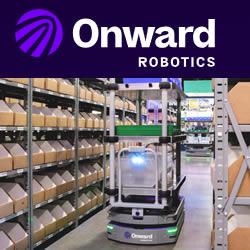The Unfolding Impact of Digital Twins in the Era of Industry 5.0
By Alexey Istomin, VP of Strategic Development, Orion Innovation
When we look at transformative technologies in the landscape of Industry 5.0, the concept of Digital Twins stands at the forefront. This notion, though sensationalized in popular culture in movies like 'Iron Man,' is much more than fiction today. Digital Twins, real-time virtual representations of physical objects, processes, or services, have arrived and are increasingly used to optimize and drive efficiencies in manufacturing production.
The Evolution and Growing Significance of Digital Twins
In the past, manufacturers used Supervisory Control and Data Acquisition (SCADA) systems to manage their industrial assets. However, with the rise of computing power, data analytics, AI, and machine learning, a new era of industrial software has emerged. Digital Twins are being deployed to oversee critical manufacturing systems, transitioning from static to dynamic, continuously learning, and evolving in sync with their physical counterparts.
As Industry 5.0 promotes a more profound symbiosis between humans and machines, Digital Twins are becoming indispensable instruments for learning, experimenting, and innovating, offering a 'digital sandbox' for minimal risk trial-and-error.
A New Paradigm For Industrial Production
Digital Twins provide real-time insights about workers, equipment, and production lines across the factory, helping preemptively identify manufacturing bottlenecks, safety issues, or equipment failures. Take the automotive industry, for example. Auto companies use Digital Twins to replicate real-world conditions for testing and optimizing body and part designs. They also play a significant role in simulating exact operating conditions to detect anomalies and improve vehicle performance.
Throughout our 30-plus-year history supporting the Telecom industry, I've seen the evolution of the Digital Twins concept firsthand. Our team developed an early version of a Digital Twin to duplicate a mobile network where every node was represented digitally. Telecom operators used this initial model to observe the network's status, develop and validate new configurations, and apply them to the network after running through the validation model. Today, these same operators are using Digital Twins to have a complete line of sight on their services.
The same can be said for Industrial Automation solution vendors, which can use the technology to build new products and systems that are faster and more accurate than before. With Digital Twins, these companies can examine, simulate, and re-calibrate virtual equipment in real-world conditions, leapfrogging previous developments.
Data-Driven Approach to Smart Manufacturing
Digital Twins collect a wide range of data from various sources to create a virtual representation of a physical object, process, or system. This can include sensor, operational, performance, and IoT data, the true backbone of the technology. The goal is to replicate real-world conditions as accurately as possible to enable simulation, analysis, and optimization.
The data collected and analyzed from the physical system and its virtual twin can help manufacturers identify and prevent a range of operational issues, including inefficiencies, malfunctions, production defects, and energy waste, among others. Armed with accurate and timely insights, manufacturers can make more informed decisions and operational adjustments in real-time to solve and predict potential issues and enhance their overall operations.
The Future of Industry 5.0 is undoubtedly intertwined with the evolution of Digital Twins. These dynamic learning entities shape our understanding and interaction with our physical environment. As we move into this new Industrial era, the knowledge and insights gained from using Digital Twins will undoubtedly prove invaluable in driving innovation and competitiveness across industrial manufacturing.
Featured Product

Onward Robotics - Meet Me Fulfillment Automation
Meet Me uniquely brings talent and technology together: providing end-to-end process efficiency and enabling accurate and continuous fulfillment workflows. Proprietary Pyxis technology uniquely orchestrates picker and Lumabot AMR workflows independently, delivering fast, accurate, and efficient fulfillment from induction to pack out. Learn more about Meet Me Automation: Download Overview Brochure
